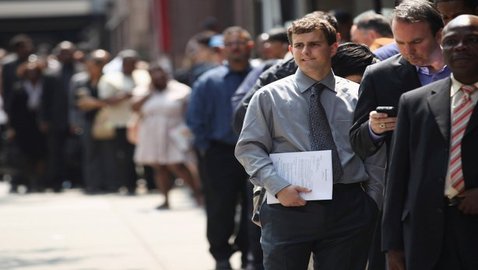Light At The End Of A Dark Tunnel: Long-Term Unemployment Easing: But The Pay’s Not Too Good
Post Views 0
James Ensley, of Rocky Face, Ga., after two years of unemployment and now finding that he would not receive his unemployment check as well, has accepted a job as a school bus driver. At $10,000 a year, it is much less than the $30,000 he earned earlier, but he said he is content and relieved.
“It feels great to go to work instead of having somebody tell you, ‘I can’t help you,'” said Ensley, 51, whose former employer went bankrupt in the housing slump. “I miss my old job, but it is not coming back so I have to get over it.”
Another worker who requested anonymity said that he accepted a much lower paying and less high end job, because not having a job was becoming a social stigma that was getting increasingly hard to live with. He said that his unemployment was psychologically devastating and sapped his confidence. He realized that the longer it was allowed to go on the more difficult it would become to get a job.
Federal Reserve Chairman Ben Bernanke had called the increasing number of the long term unemployed as “far from normal.” Mercifully with the situation easing somewhat, American companies are happily to recruit from this pool of 5.2 million experienced former workers.
However, employers keen to keep labor costs low are not paying them too much but relieved to have a job, they have settled for reduced pay.
James Paulsen, chief investment strategist at Wells Capital Management in Minneapolis said, “The cost of labor is very cheap. Nominal wage gains are very anemic,” so these costs “are down and will likely stay down for a while longer.”
Rob Valletta, research adviser at the San Francisco Fed, said that the improved situation means that around 11 percent of the long-term employed will find re-employment every month. If this growth continues at its present rate, he says that the number of long-term employed will be halved within 6 months and only 25 percent will remain jobless at the end of the year.
Most of the long-term unemployed were either struck off the unemployment list or were on the verge of exhausting it soon, even though the standard 26-week package of unemployment insurance was extended to 99 weeks in 2009. Moreover, states with lower jobless rates were no longer eligible for the benefits. The Labor Department reported that from a high of 1.03 million people claiming unemployment benefits in October 2010, the number had come down to 5,400 by August 10, this year.
Labor Department figure released in August showed that the average length of joblessness remained about 39 weeks in August, after hitting a 15-month low in July.
Atlanta Fed President Dennis Lockhart speaking to reporters said, “I do find it encouraging that at least the number has trended down,” though it’s still “very, very high.”
The plight of the long-term unemployed was made even worse because they were not very young and did not have too much time ahead of them to make up for lost income. Moreover, many of them were also paying for their children’s cost of college and care for their aging parents, in the process running through their reserves.
The new jobs, albeit at much lesser pay are at least providing them with a financial crutch that will lessen their dependability on unemployment pay checks and reduce the stigma of being unemployable.
Light At The End Of A Dark Tunnel: Long-Term Unemployment Easing: But The Pay’s Not Too Good by Harrison Barnes

